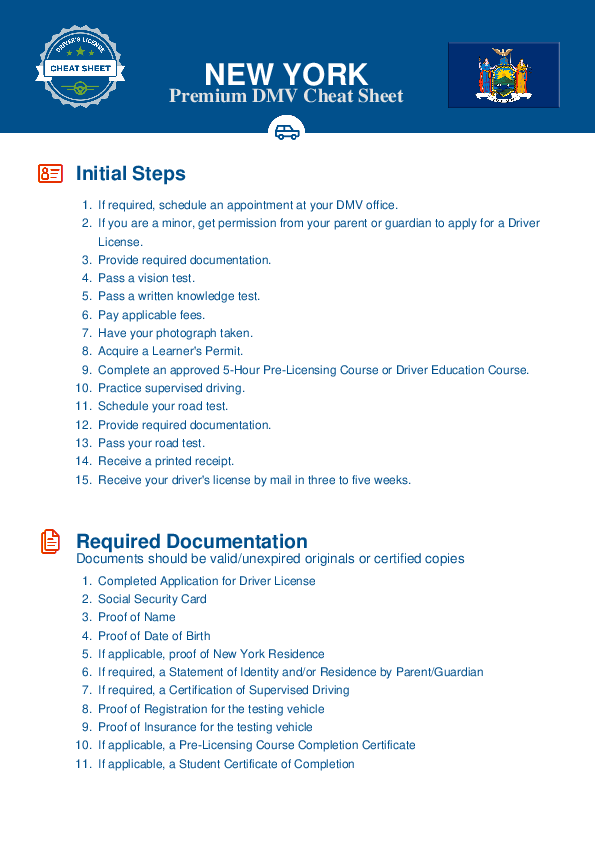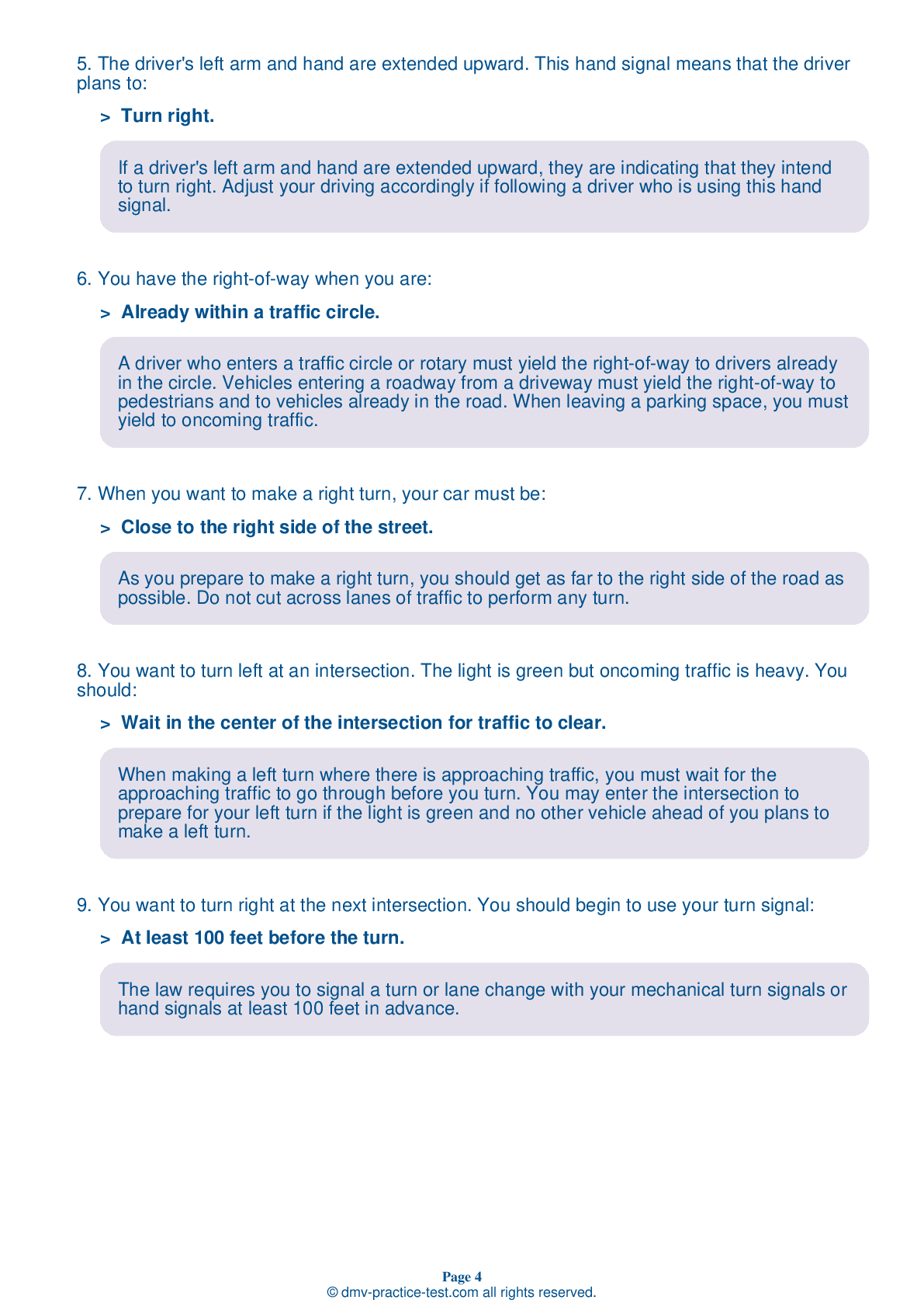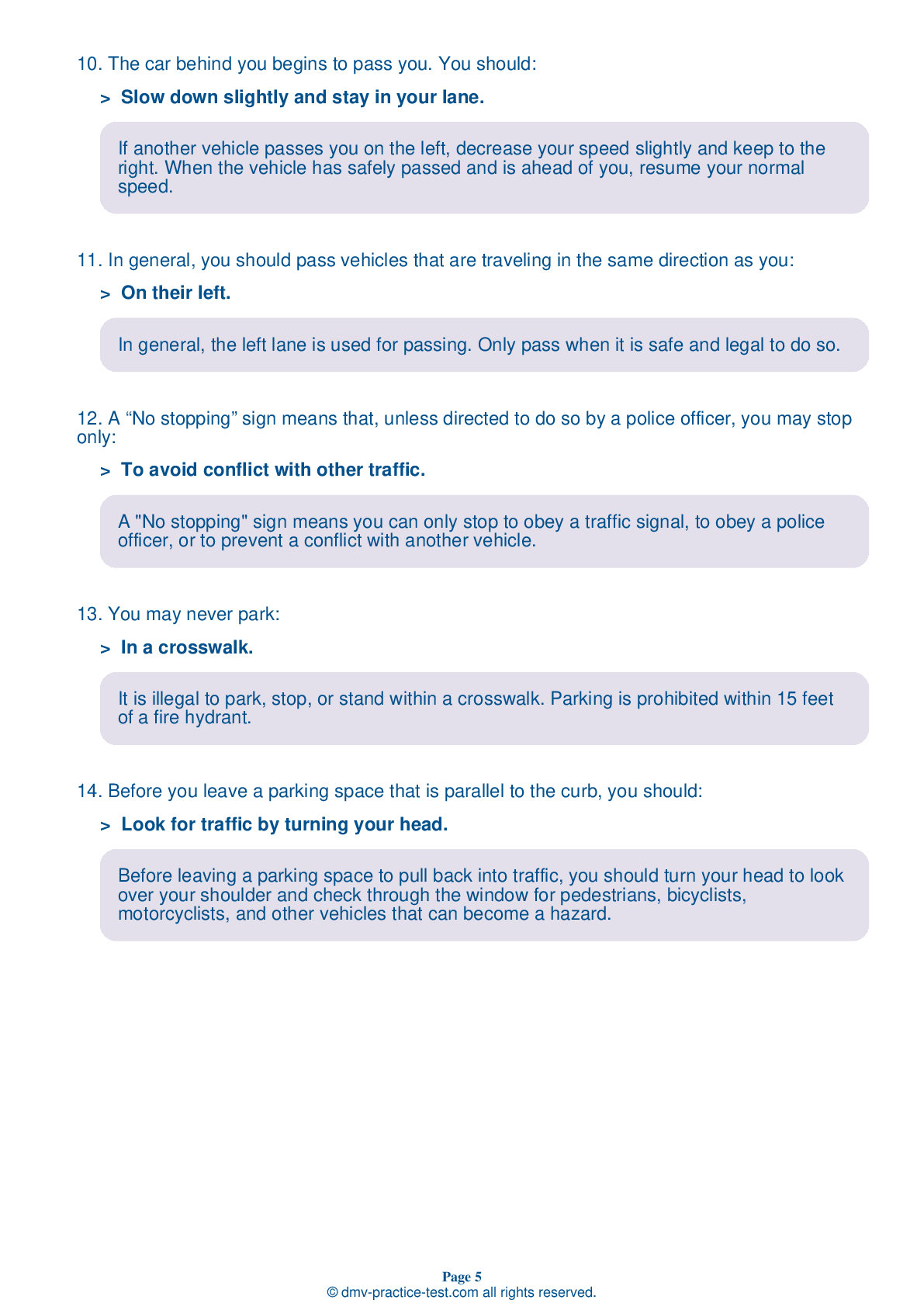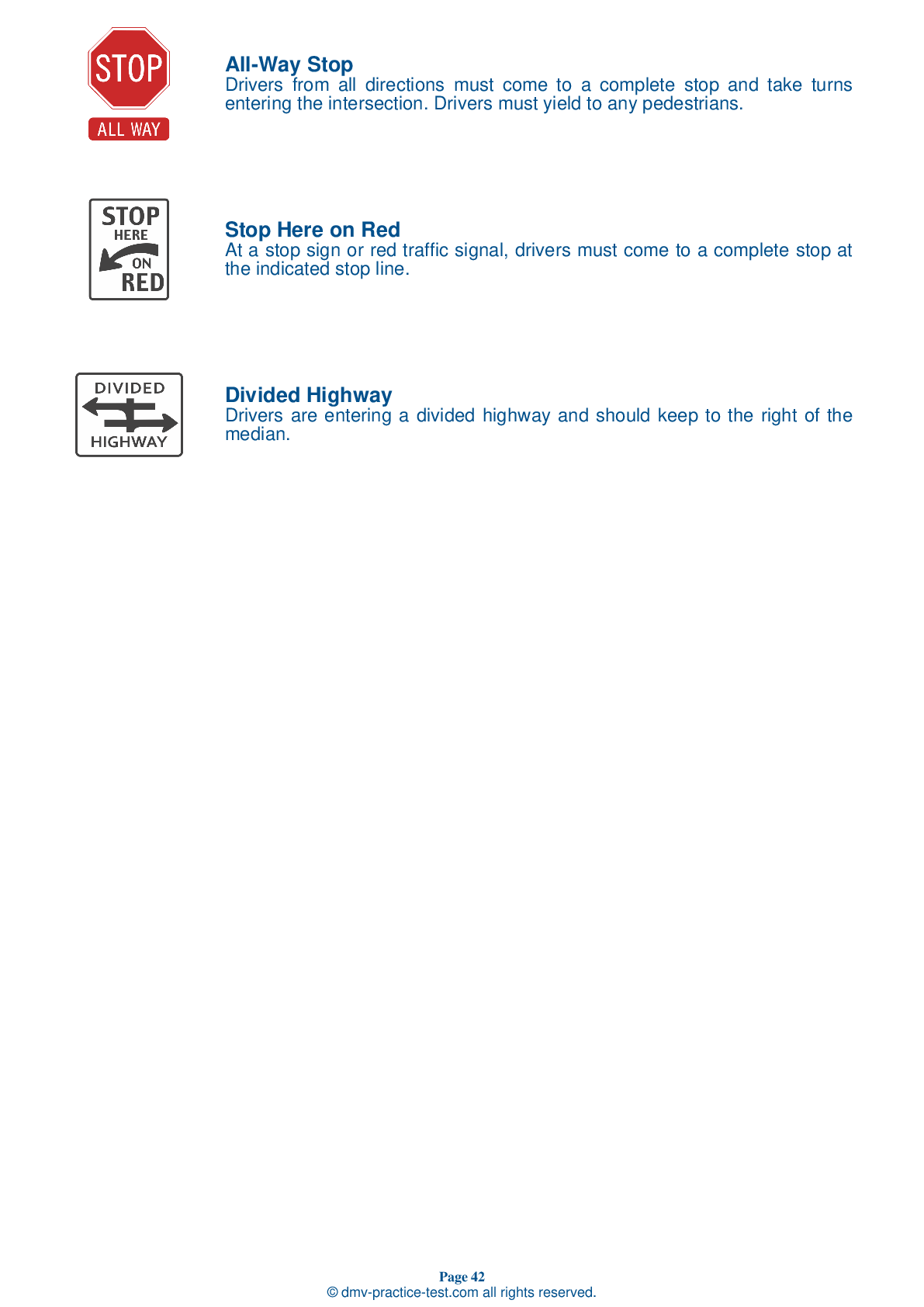FREE New York DMV Practice Test #9
New York's DMV practise examinations have been revised for January 2025. It includes questions based on the New York Driver Handbook's most significant traffic signals and legislation for 2025. Use actual questions that are very similar (often identical!) to the DMV driving permit test and driver's licence exam to study for the DMV driving permit test and driver's licence exam.
On the practise exam, each question gets a tip and explanation to help you remember the concepts. The written component of the official New York DMV test will feature questions about traffic rules, traffic signs, and driving statutes, as well as knowledge from the Driver Handbook.
To obtain a passing grade, you must correctly answer 14 of the 20 questions. Take this practise test from the New York Department of Motor Vehicles to help you prepare for your instruction permit or driver's licence.
The DMV exam is available in several languages.
Using any kind of testing assistance will result in an automatic fail, and the DMV may take additional action against your driver's licence, so stay away from it.
1 . When driving on wet pavement, it's important to remember:
Wet roadway surfaces can be dangerously slick, especially immediately following a rainfall. When you are driving on wet roads, your vehicle is traveling on a thin layer of oil, dirt, and water. Slow down when there is heavy rain, standing water, or slush on the road to reduce the risk of your wheels losing traction on the slick surface.
2 . This sign means:
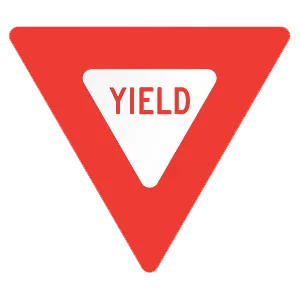
Decrease your speed as you approach an intersection with a yield sign. Prepare to stop and yield the right-of-way to vehicles and pedestrians in the intersection or crossroad. You must come to a full stop at a yield sign if traffic conditions require it.
3 . You must yield to a pedestrian using a white cane or guide dog:
Pedestrians who use guide dogs or white canes (with or without a red tip) must be given the right-of-way at all times.
4 . On a freeway, you should look farther ahead than you would on a city street:
On the freeway, be ready for changes in traffic conditions. Watch for signals from other drivers. Expect merging vehicles at on-ramps and interchanges and be prepared for rapid changes in road conditions and traffic flow.
5 . What might happen when alcohol is combined with another drug?
Consuming both alcohol and another drug may enhance the effects of both. For example, taking one drink when you are also using a cold remedy could affect you as if you have had several drinks.
6 . Texting while driving is:
In the state of New York, drivers are not permitted to use a cell phone to type or read a text or email while operating a vehicle. Texting while driving can result in a fine of up to $450.
7 . You may drive around or under a gate that is being lowered or raised at a railroad crossing:
Flashing red lights, lowered crossing gates, and/or bells at a railroad crossing mean that you must come to a complete stop. You must not go across the tracks until the lights and bells have stopped and the crossing gates are completely up. Do not drive around or under a gate that is moving up or down.
Need Car Insurance? No problem!
Compare the best rates in New York and find a personalized policy that meets your needs.
1. Are You Currently insured ?
2. Married ?
3. Do you own your Home?
4. Do you have more than 1 car ?
5. Have you or a Family Member Honorably Served in U.S. Military ?
6. Your Name
7. Age
8. Zip code
IMPORTANT REMINDER:Auto Insurance is Mandatory to drive in New York. Get covered before you hit the road to avoid any fines.
Ranked by best match
